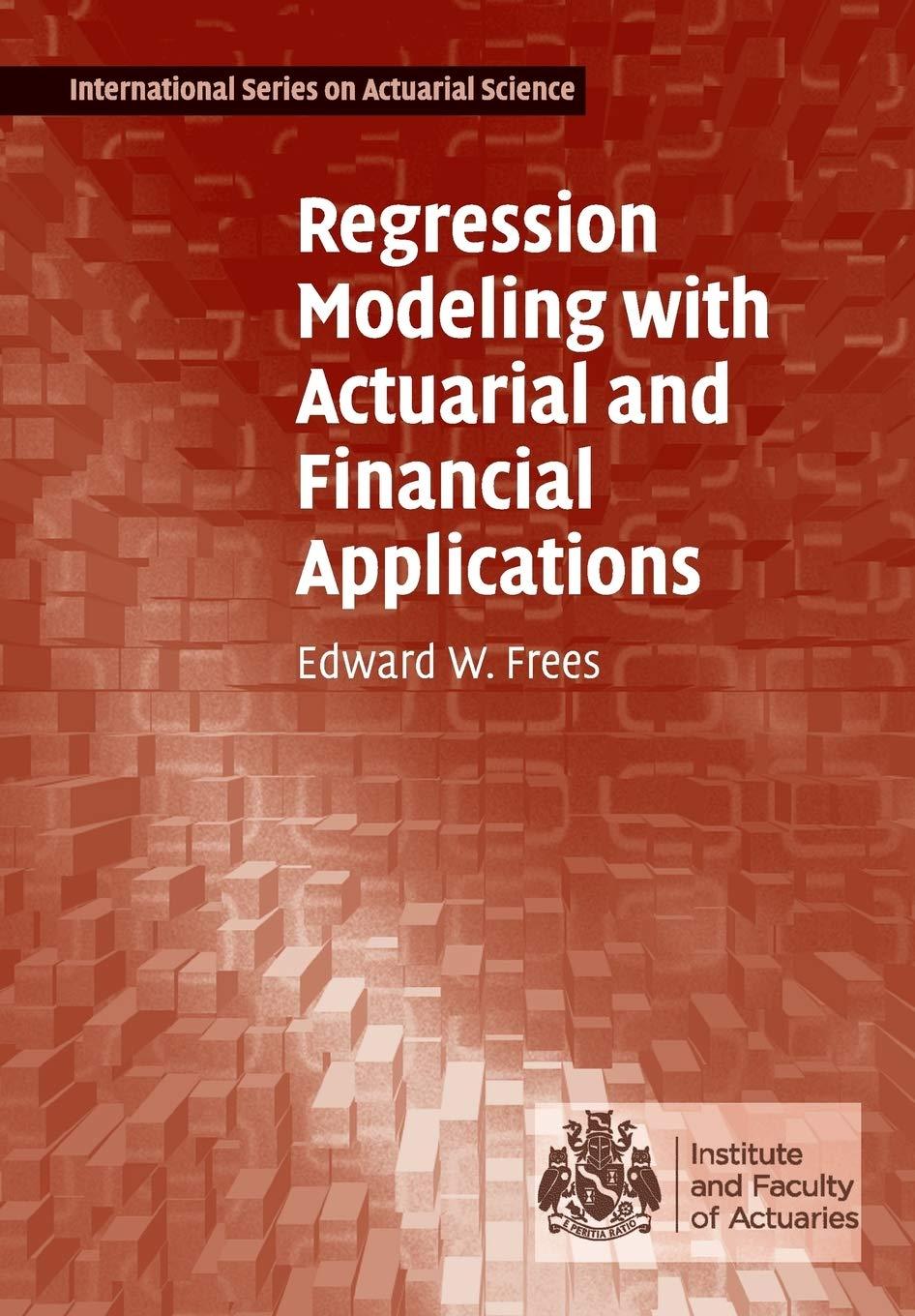Suppose that you are an employee benefits actuary working with a medium-sized company in Wisconsin. This company
Question:
Suppose that you are an employee benefits actuary working with a medium-sized company in Wisconsin. This company is considering offering, for the first time in its industry, hospital insurance coverage to dependent children of employees. You have access to company records and so have available the number, age, and sex of the dependent children but have no other information about hospital costs from the company. In particular, no firm in this industry has offered this coverage, and so you have little historical industry experience on which you can forecast expected claims.
You gather data from the Nationwide Inpatient Sample of the Healthcare Cost and Utilization Project (NIS-HCUP), a nationwide survey of hospital costs conducted by the U.S. Agency for Healthcare Research and Quality
(AHRQ). You restrict consideration to Wisconsin hospitals and analyze a random sample of n = 500 claims from 2003 data. Although the data come from hospital records, they are organized by individual discharge, and so you have information about the age and sex of the patient discharged.
Specifically, you consider patients aged 0–17years. In a separate project,
you will consider the frequency of hospitalization. For this project, the goal is to model the severity of hospital charges, by age and sex.
a. Examine the distribution of the dependent variable, TOTCHG. Do this by making a histogram and then a qq plot, comparing the empirical to a normal distribution.
b. Take a natural log transformation and call the newvariable LNTOTCHG.
Examine the distribution of this transformed variable. To visualize the logarithmic relationship, plot LNTOTCHG versus TOTCHG.
Step by Step Answer:

Regression Modeling With Actuarial And Financial Applications
ISBN: 9780521135962
1st Edition
Authors: Edward W. Frees




